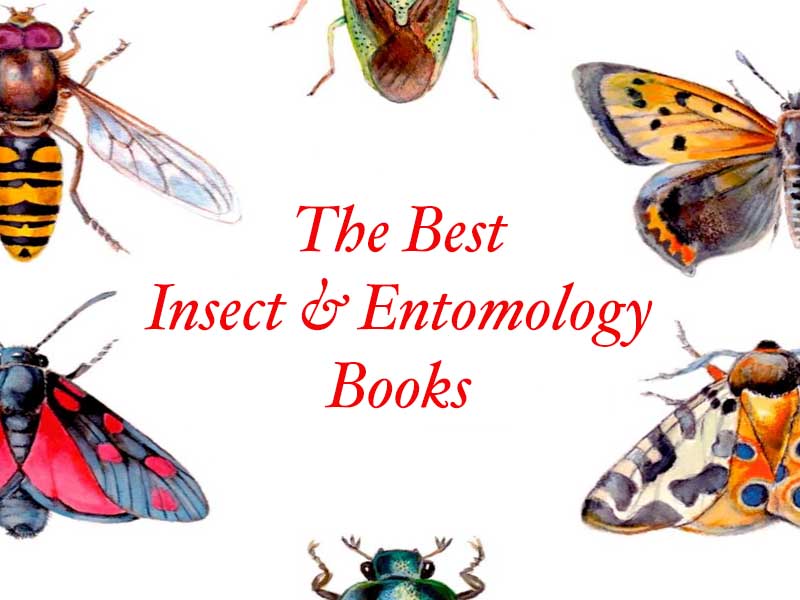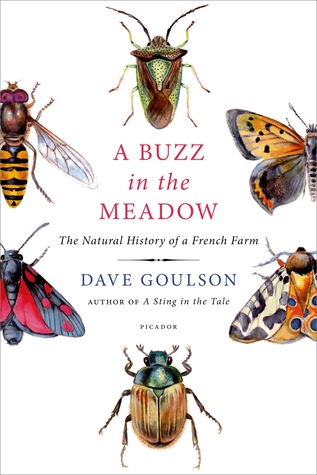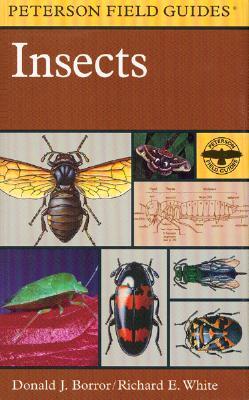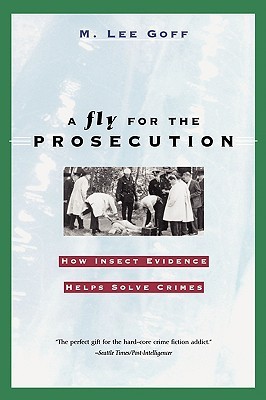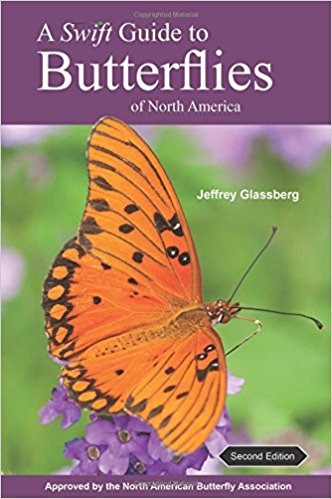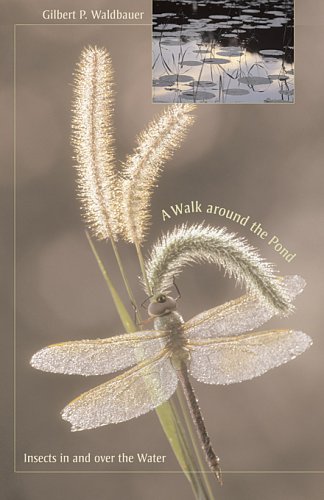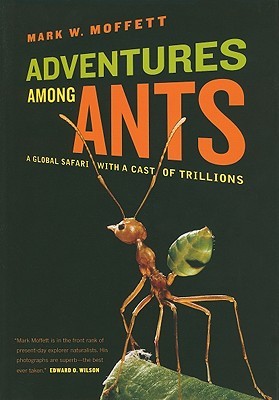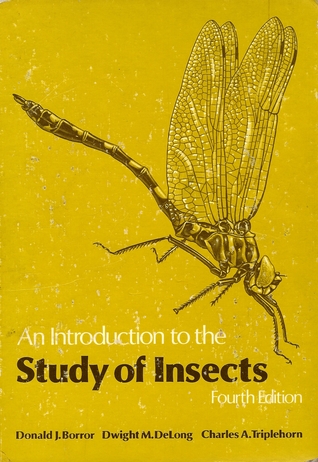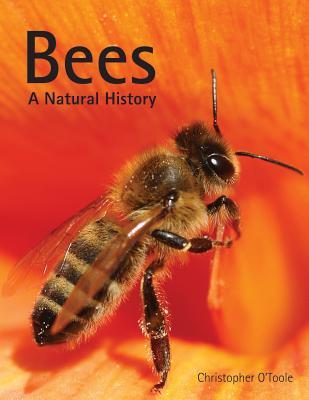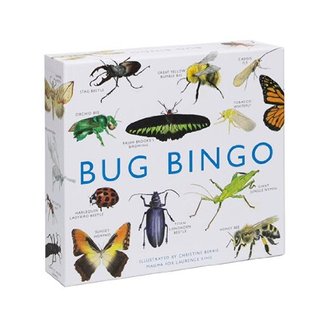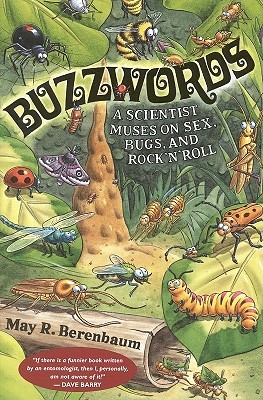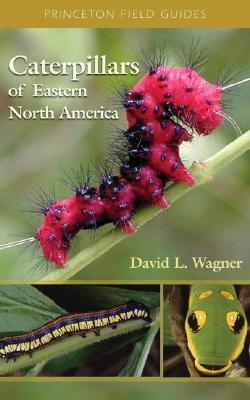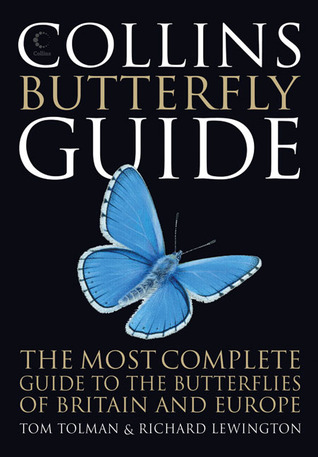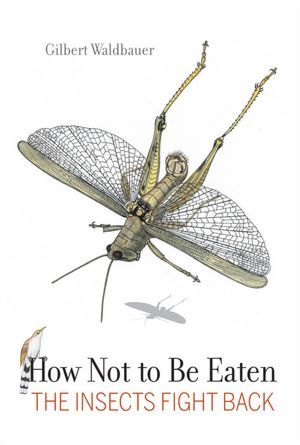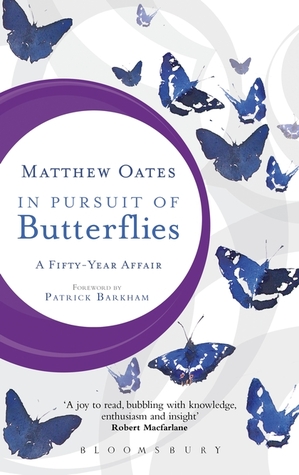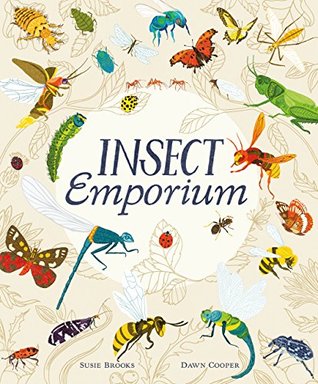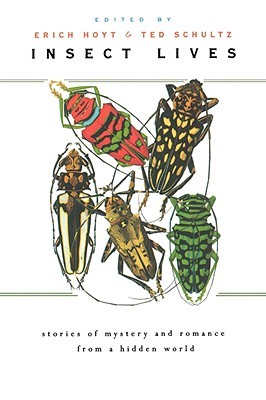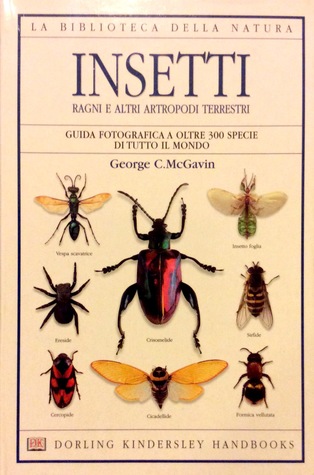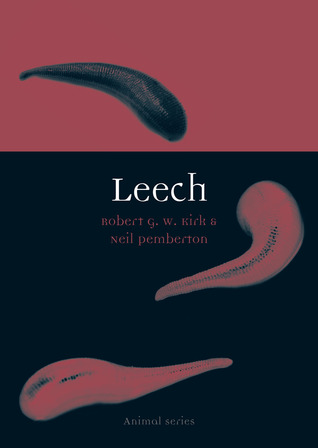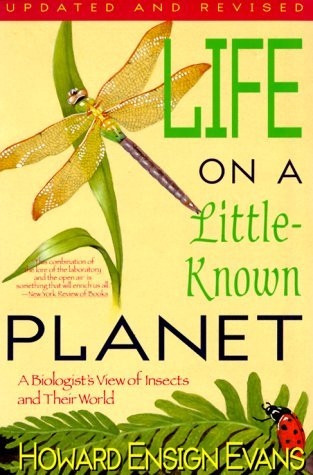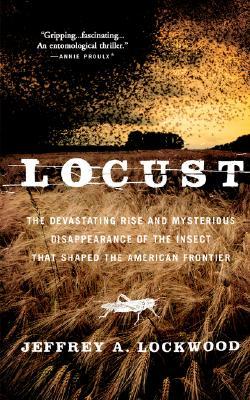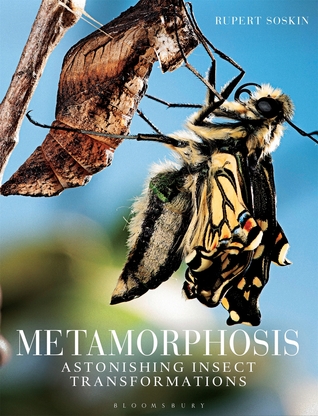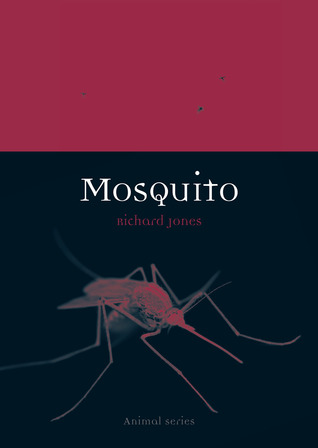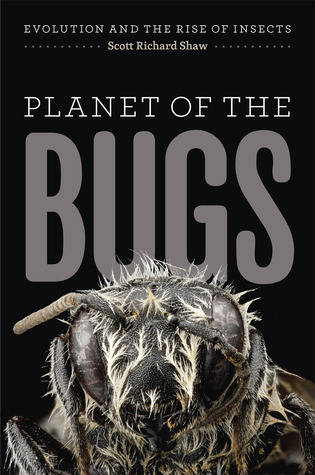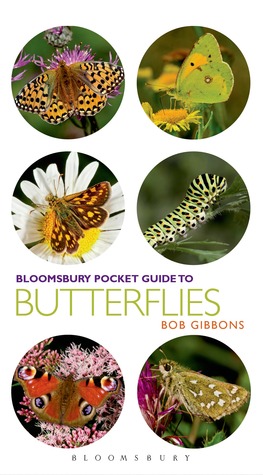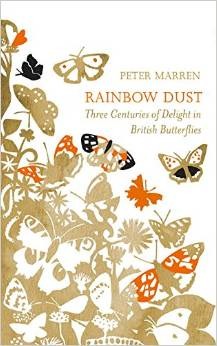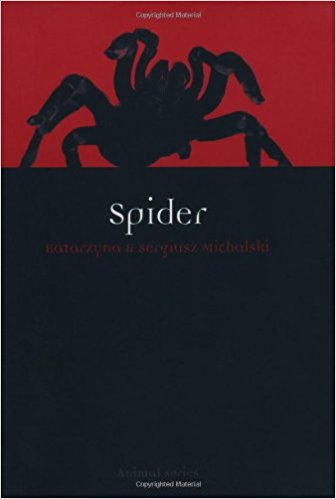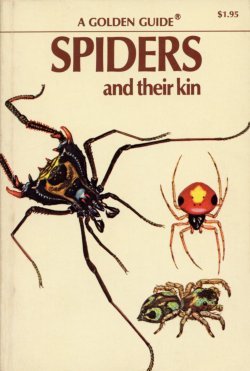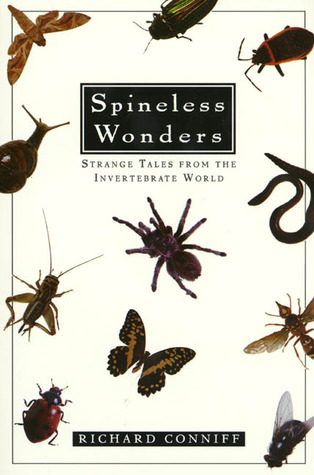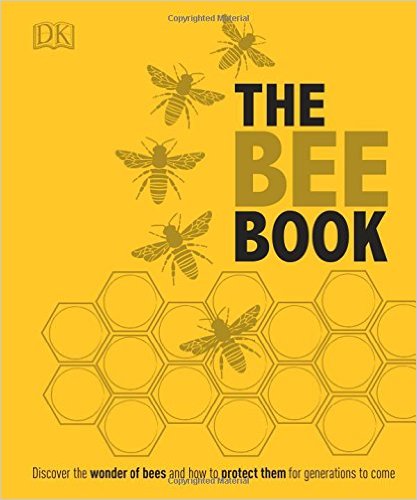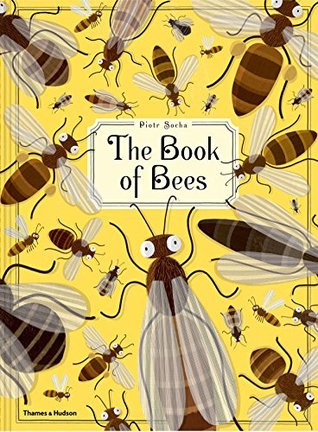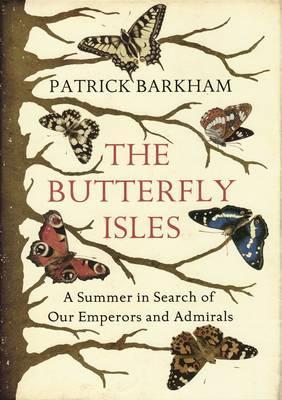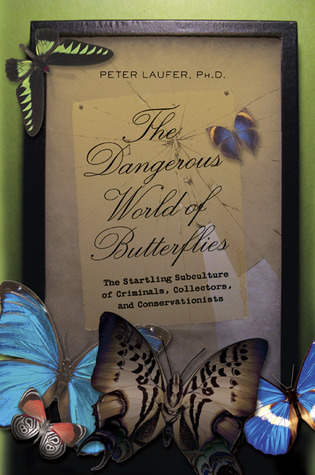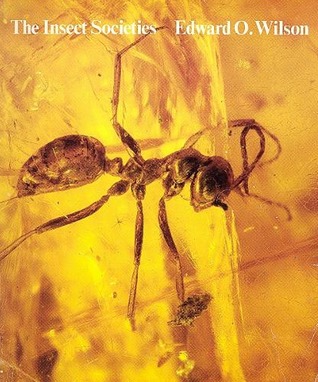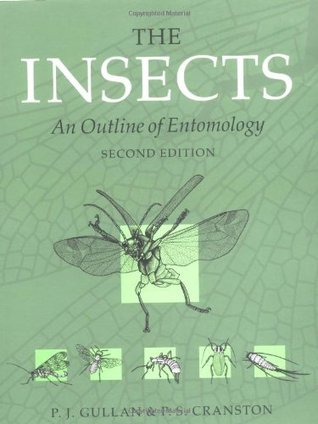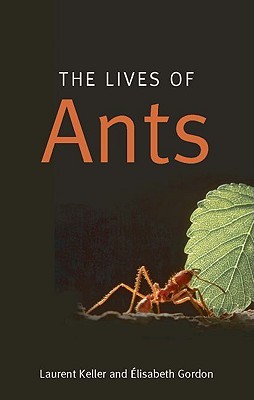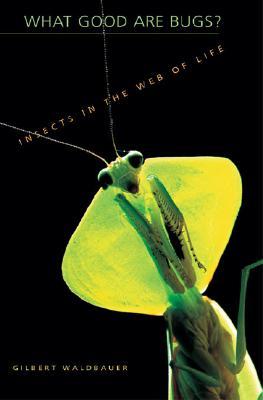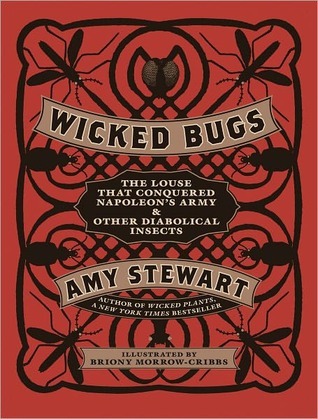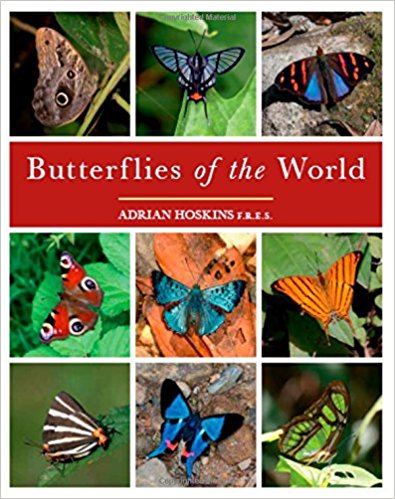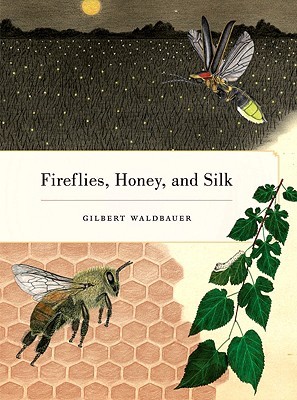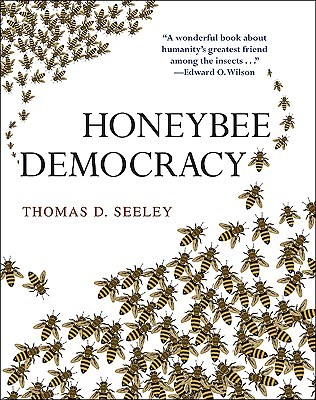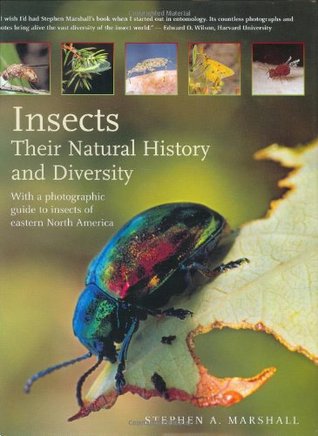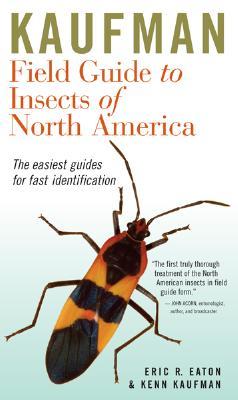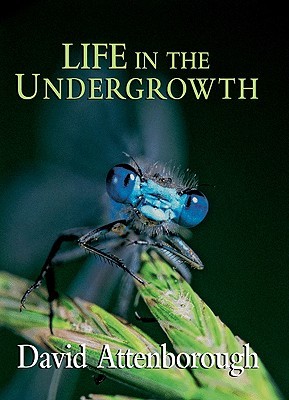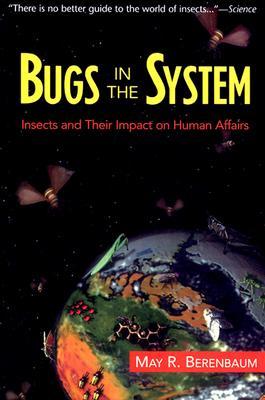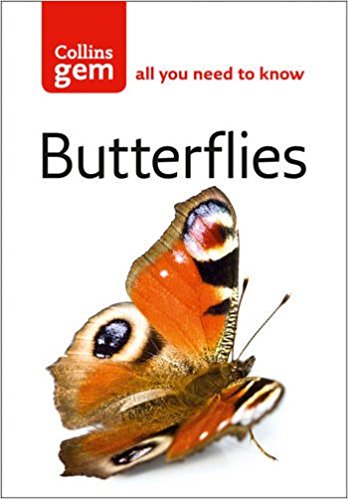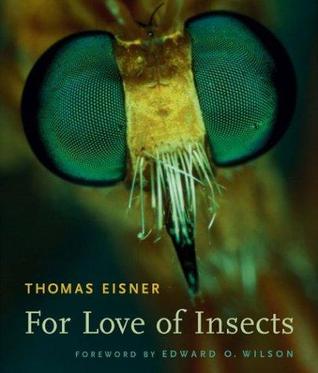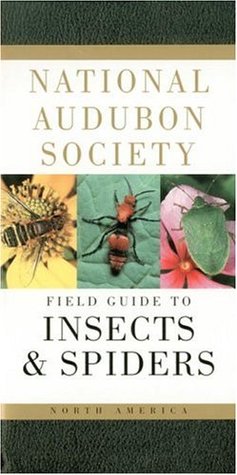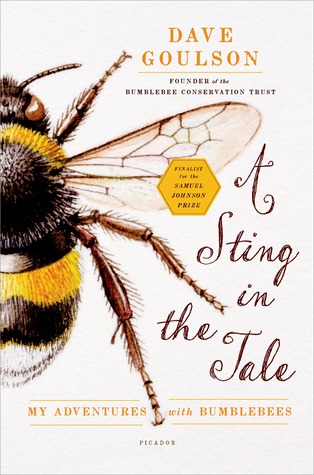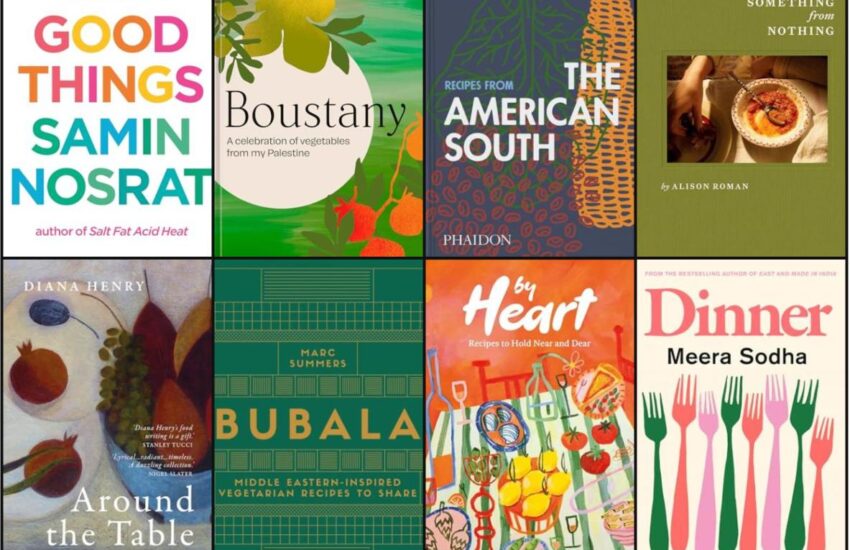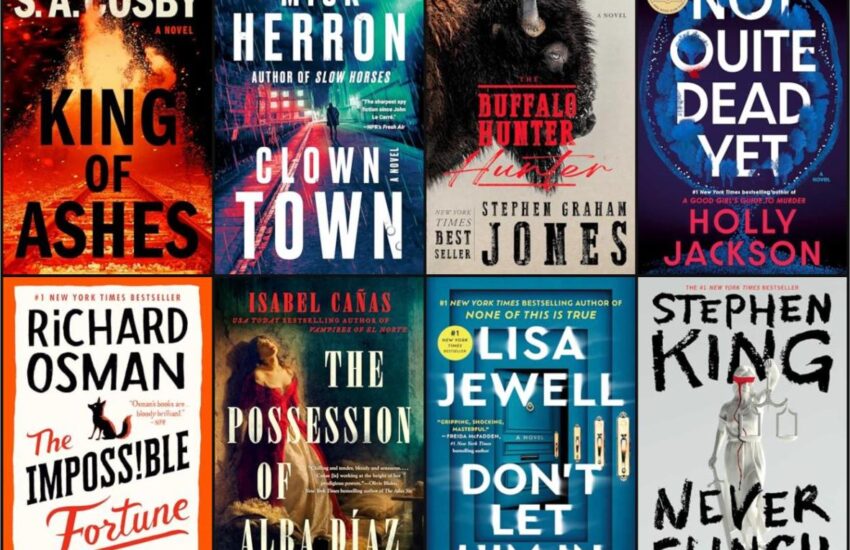The Best Books About Insects & Entomology
“What are the best books about Insects & Entomology?” We looked at 396 of the top Insect books, aggregating and ranking them so we could answer that very question!
The life of an insect is almost incomprehensible to humans. Luckily there are individuals who dedicate their lives to learning more about all kinds of different insects and how their world works. The top 54 books, all appearing on two or more “Best Insect” lists, are below with images, descriptions, and links. The remaining 300+ titles, as well as the articles we used, are alphabetically listed at the bottom of the page.
Happy Scrolling!
Top 54 Entomology Books
54 .) A Buzz in the Meadow by Dave Goulson
Lists It Appears On:
- Booktopia
- Waterstones
“A Sting in the Tale, Dave Goulson’s account of a lifetime studying bumblebees, was a powerful call to arms for nature lovers everywhere. Brilliantly reviewed, it was shortlisted for the Samuel Johnson Prize for the best nonfiction book of the year, and it debuted the already renowned conservationist’s ability to charm, educate, and tell an absorbing story.
In A Buzz in the Meadow, Goulson returns to tell the tale of how he bought a derelict farm in the heart of rural France. Over the course of a decade, on thirty-three acres of meadow, he created a place for his beloved bumblebees to thrive. But other creatures now live there too, myriad insects of every kind, many of which Goulson had studied before in his career as a biologist. You’ll learn how a deathwatch beetle finds its mate and why butterflies have spots on their wings, and you’ll see how a real scientist actually conducts his experiments.
But this book is also a wake-up call, urging us to cherish and protect life in all its forms. Goulson has that rare ability to persuade you to go out into your garden or local park and observe the natural world. The subtle glory that is life in all its forms is there to be discovered. And if we learn to value what we have, perhaps we will find a way to keep it.”
53 .) A Field Guide to Insects : America North of Mexico by Donald J. Borror
Lists It Appears On:
- San Diego Natural History Museum
- Goodreads 2
“Find what you’re looking for with Peterson Field Guides—their field-tested visual identification system is designed to help you differentiate thousands of unique species accurately every time.
Detailed descriptions of insect orders, families, and many individual species are illustrated with 1,300 drawings and 142 superb color paintings. Illustrations – which use the unique Peterson Identification System to distinguish one insect from another – include size lines to show the actual length of each insect. A helpful glossary explains the technical terms of insect anatomy.”
52 .) A Fly for the Prosecution: How Insect Evidence Helps Solve Crimes by M. Lee Goff
Lists It Appears On:
- Goodreads
- Goodreads 2
“The forensic entomologist turns a dispassionate, analytic eye on scenes from which most people would recoil–human corpses in various stages of decay, usually the remains of people who have met a premature end through accident or mayhem. To Lee Goff and his fellow forensic entomologists, each body recovered at a crime scene is an ecosystem, a unique microenvironment colonized in succession by a diverse array of flies, beetles, mites, spiders, and other arthropods: some using the body to provision their young, some feeding directly on the tissues and by-products of decay, and still others preying on the scavengers.
Using actual cases on which he has consulted, Goff shows how knowledge of these insects and their habits allows forensic entomologists to furnish investigators with crucial evidence about crimes. Even when a body has been reduced to a skeleton, insect evidence can often provide the only available estimate of the postmortem interval, or time elapsed since death, as well as clues to whether the body has been moved from the original crime scene, and whether drugs have contributed to the death.”
51 .) A Swift Guide to Butterflies of North America by Jeffrey Glassberg
Lists It Appears On:
- Booktopia
- Wildlife Books
This is a revised second edition of the most detailed, comprehensive, and user-friendly photographic field guide to the butterflies of North America. Written by Jeffrey Glassberg, the pioneering authority on the field identification of butterflies, the guide covers all known species, beautifully illustrating them with 3,500 large, gorgeous color photographs–the very best images available. This second edition includes more than 500 new photos and updated text, maps, and species names. For most species, there are photographs of topsides and undersides, males and females, and variants. All text is embedded in the photographs, allowing swift access in the field, and arrows point to field marks, showing you exactly what to look for. Detailed, same-page range maps include information about the number of broods in each area and where strays have been recorded. Color text boxes highlight information about habitat, caterpillar food plants, abundance and flight period, and other interesting facts. Also included are a quick visual index and a caterpillar food plant index. The result is an ideal field guide that will enable you to identify almost every butterfly you see.
50 .) A Walk Around The Pond: Insects In And Over The Water by Gilbert Waldbauer
- The Dragonfly Woman
- Goodreads
“A water strider darts across a pond, its feet dimpling the surface tension; a giant water bug dives below, carrying his mate’s eggs on his back; hidden among plant roots on the silty bottom, a dragonfly larva stalks unwary minnows. Barely skimming the surface, in the air above the pond, swarm mayflies with diaphanous wings. Take this walk around the pond with Gilbert Waldbauer and discover the most amazingly diverse inhabitants of the freshwater world.
In his hallmark companionable style, Waldbauer introduces us to the aquatic insects that have colonized ponds, lakes, streams, and rivers, especially those in North America. Along the way we learn about the diverse forms these arthropods take, as well as their remarkable modes of life―how they have radiated into every imaginable niche in the water environment, and how they cope with the challenges such an environment poses to respiration, vision, thermoregulation, and reproduction. We encounter the caddis fly larva building its protective case and camouflaging it with stream detritus; green darner dragonflies mating midair in an acrobatic wheel formation; ants that have adapted to the tiny water environment within a pitcher plant; and insects whose adaptations to the aquatic lifestyle are furnishing biomaterials engineers with ideas for future applications in industry and consumer goods.”
49 .) Adventures Among Ants: A Global Safari with a Cast of Trillions by Mark W. Moffett
Lists It Appears On:
- Goodreads
- Goodreads 2
Intrepid international explorer, biologist, and photographer Mark W. Moffett, “the Indiana Jones of entomology,” takes us around the globe on a strange and colorful journey in search of the hidden world of ants. In tales from Nigeria, Indonesia, the Amazon, Australia, California, and elsewhere, Moffett recounts his entomological exploits and provides fascinating details on how ants live and how they dominate their ecosystems through strikingly human behaviors, yet at a different scale and a faster tempo. Moffett’s spectacular close-up photographs shrink us down to size, so that we can observe ants in familiar roles; warriors, builders, big-game hunters, and slave owners. We find them creating marketplaces and assembly lines and dealing with issues we think of as uniquely human–including hygiene, recycling, and warfare. Adventures among Ants introduces some of the world’s most awe-inspiring species and offers a startling new perspective on the limits of our own perception.
48 .) An Introduction to the Study of Insects by Donald J. Borror
Lists It Appears On:
- City Bugs
- Goodreads 2
This text uses a taxonomic approach to introduce students to the science of entomology. Extensive use of identification keys acquaints students with all the families of insects in the United States and Canada and provides means for students to identify 95% or more of the insects found occurring in North America.
47 .) Bees: A Natural History by Christopher O’Toole
Lists It Appears On:
- Wildlife Books
- Goodreads
“Only recently have biologists discovered that human survival is inextricably linked to the survival of insects, specifically, bees. Today the 16-20,000 species of bee continue to play vital roles in human ecology. We survive only by grace of the life-sustaining network of bee-plant relationships.
Bees immerses readers in the world of a group of insects whose diversity of form and behavior is eloquent testimony to the fine-tuning of natural selection.”
46 .) Bug Bingo by Christine Berrie
Lists It Appears On:
- Booktopia
- Waterstones
“This beautifully illustrated bingo game features 64 species of bugs from around the world. Identify all kinds of insects – from the Giant Hawker Dragonfly to the Kissing Bug and the Orchid Bee to the Sacred Scarab – mark them off on your card and bingo!
Bug Bingo brings a fun and educational twist to the traditional game as players learn the names and colorings of both favorite species like the Honey Bee and more exotic bugs like the Vampire Moth”
45 .) Buzzwords by May R. Berenbaum
Lists It Appears On:
- Kentucky Entomology
- Goodreads 2
“What sort of person devotes their life to the study of bugs? How do you picture your average, every-day entomologist? “”I’ve been photographed on several occasions,”” writes author May Berenbaum, “”and it seems that every time, photographers ask me to pose in one of three ways: seated in front of a microscope, with an insect (usually a cockroach) on my face, or with an insect net clutched in my hand.””
In Buzzwords, Berenbaum expertly blows away these stereotypes with short takes on all things entomological–from the story of a pet ant kept for 14 years to major motion pictures featuring cockroaches.”
44 .) Caterpillars of Eastern North America by David L. Wagner
Lists It Appears On:
- City Bugs
- Goodreads 2
This lavishly illustrated guide will enable you to identify the caterpillars of nearly 700 butterflies and moths found east of the Mississippi. The more than 1,200 color photographs and two dozen line drawings include numerous exceptionally striking images. The giant silk moths, tiger moths, and many other species covered include forest pests, common garden guests, economically important species, and of course, the Mescal Worm and Mexican Jumping Bean caterpillars. Full-page species accounts cover almost 400 species, with up to six images per species including an image of the adult plus succinct text with information on distribution, seasonal activity, foodplants, and life history. These accounts are generously complemented with additional images of earlier instars, closely related species, noteworthy behaviors, and other intriguing aspects of caterpillar biology.
43 .) Collins Butterfly Guide by Tom Tolman, Richard Lewington
Lists It Appears On:
- Waterstones
- Wildlife Books
“This classic guide to the butterflies of Britain and northern Europe enters its third edition as part of the authoritative Collins Guide series.
This comprehensive guide to the butterflies of Britain and Europe features over 400 species, depicting both male and female insects. Species descriptions include details on taxonomic nomenclature, distribution, flight period, variation, habitat, behaviour and life cycle. Subspecies are included where there is significant variation, and distribution maps accompany each widespread species.”
42 .) How Not to Be Eaten: The Insects Fight Back by Gilbert Waldbauer
Lists It Appears On:
- Goodreads
- Wildlife Books
All animals must eat. But who eats who, and why, or why not? Because insects outnumber and collectively outweigh all other animals combined, they comprise the largest amount of animal food available for potential consumption. How do they avoid being eaten? From masterful disguises to physical and chemical lures and traps, predatory insects have devised ingenious and bizarre methods of finding food. Equally ingenious are the means of hiding, mimicry, escape, and defense waged by prospective prey in order to stay alive. This absorbing book demonstrates that the relationship between the eaten and the eater is a central—perhaps the central—aspect of what goes on in the community of organisms. By explaining the many ways in which insects avoid becoming a meal for a predator, and the ways in which predators evade their defensive strategies, Gilbert Waldbauer conveys an essential understanding of the unrelenting coevolutionary forces at work in the world around us.
41 .) In Pursuit of Butterflies by Matthew Oates
Lists It Appears On:
- Booktopia
- Waterstones
“Matthew Oates has led a butterflying life. Naturalist, conservationist and passionate lover of poetry, he has devoted himself to these exalted creatures: to their observation, to singing their praises, and to ensuring their survival. Based on fifty years of detailed diaries, In Pursuit of Butterflies is the chronicle of this life.
Oates leads the reader through a lifetime of butterflying, across the mountain tops, the peat bogs, sea cliffs, meadows, heaths, the chalk downs and great forests of the British Isles. Full of humour, zeal, digression, expertise and anecdote, this book provides a profound encounter with one of our great butterfly lovers, and with a half-century of butterflies in Britain.”
40 .) Insect Emporium by Susie BrooksDawn Cooper
Lists It Appears On:
- Booktopia
- Waterstones
Open up this treasure trove of insects and immerse yourself in a wondrous collection of creatures as nature unfolds around you. Hidden amongst the foliage you’ll spy splashes of purple, orange, yellow, green and blue as a cloud of grasshoppers spring into action. And as you wander through, listen out for the buzzing of bees and the flitter of wings as caterpillars transform into a flutter of moths and butterflies. Then pause to admire the twinkling from the fireflies and glow-worms, and remember that your magical journey into this enchanting secret world has only just begun…This beautiful collection of insects contains a limited edition print of Dawn Cooper’s gorgeous illustrations, sumptuous gold foil on the jacket and engaging information, making it a glorious gift book that will appeal to anyone who loved Animalium, The Wonder Garden or Creaturepedia. Susie Brooks has a first class history of art degree and has worked as an editor and author of children’s non-fiction and picture books for over 10 years. She’s an artist herself and sometimes runs workshops for young children. Dawn Cooper is a hugely talented illustrator who is inspired by natural history and botanical illustrations as well as things she has read or seen on her travels. In the rare moments when she’s not drawing, Dawn likes nothing more than a long, rewarding walk with her camera.
39 .) Insect Lives: Stories of Mystery and Romance from a Hidden World by Erich Hoyt
Lists It Appears On:
- Goodreads
- Goodreads 2
A Wonderful Journey into the Insect World through Literature, Science, Art, and Popular Culture Aristotle on metamorphosis
38 .) Insects Spiders and Other Terrestrial Arthropods by George C. McGavin
Lists It Appears On:
- City Bugs
- Goodreads 2
37 .) Leech by Robert G.W. Kirk
Lists It Appears On:
- Booktopia
- Goodreads
“Armed with razor-sharp teeth and capable of drinking many times its volume of blood, the leech is an unlikely cure for ill health. Yet that is exactly the role this worm-like parasite has played in both Western and Eastern medicine throughout history.
In this book, Robert G. W. Kirk and Neil Pemberton explore how the leech surfaces in radically different spheres. The ancients used them in humeral medicine to bring the four humors of the body—blood, phlegm, and black and yellow bile—back into balance. Today, leeches are used in plastic and reconstructive surgery to help reattach severed limbs and remove pools of blood before it kills tissue. Leeches have also been used in a nineteenth-century meteorological barometer and a twentieth-century biomedical tool that helped win a Nobel Prize. Kirk and Pemberton also reveal the dark side of leeches as they are portrayed in fiction, film, and popular culture. From Bram Stoker’s Dracula to a video game player’s nemesis, the leech is used to represent the fears of science run amok. Leech shines new light on one of humanity’s most enduring and unlikely companions.”
36 .) Life on a Little Known Planet by Howard Ensign Evans
Lists It Appears On:
- Five Books
- The Dragonfly Woman
The world of insects is this little-known planet.
35 .) Locust: The Devastating Rise and Mysterious Disappearance of the Insect that Shaped the American Frontier by Jeffrey A. Lockwood
Lists It Appears On:
- Goodreads
- Goodreads 2
In 1876, the U.S. Congress declared the locust “the single greatest impediment to the settlement of the country between Mississippi and the Rocky Mountains.” Throughout the nineteenth century, swarms of locusts regularly swept across the American continent, turning noon into dusk, devastating farm communities, and bringing trains to a halt. The outbreaks subsided in the 1890s, and then, suddenly—and mysteriously—the Rocky Mountain locust vanished. A century later, entomologist Jeffrey Lockwood vowed to discover why.Locust is the story of how one insect shaped the history of the western United States. A compelling personal narrative drawing on historical accounts and modern science, this beautifully written book brings to life the cultural, economic, and political forces at work in America in the late nineteenth century, even as it solves one of the greatest extinction mysteries of our time.
34 .) Metamorphosis by Rupert Soskin
Lists It Appears On:
- Booktopia
- Wildlife Books
“Insects truly are the ugly ducklings of the natural world. How does something as beautiful as a butterfly begin life as little more than a fancy maggot? Or something as elegant and delicate as a lacewing hatch like a minuscule escapee from a horror movie? What are the circumstances that require a creature to transform from one body shape into another, a shape that is often so utterly different from the first that you would be forgiven for thinking they were completely unrelated organisms?
This book illustrates some of the dramatic transformations insects undergo in their life cycles and explores why evolution has arrived at these remarkable solutions to survival. The aim of the book is to show remarkable transformations, most of which have never before been seen.”
33 .) Mosquito by Richard Jones
Lists It Appears On:
- Booktopia
- Goodreads
“Bug zappers were invented for one purpose: to kill mosquitoes, the bane of many summer evenings, camping trips, and exotic vacations. These blood-sucking insects do more than leave us with itchy bites, though. The diseases they carry and inject, such as yellow fever, dengue fever, and the West Nile virus, make them responsible for more human deaths than any other animal. The most deadly of these, malaria, has been mostly eradicated from the northern hemisphere, but it continues to pose a mortal threat in developing countries. It kills nearly 700,000 of the 350 million that succumb to the infection each year, and the majority of the deaths occur in sub-Saharan Africa.
Drawing on scientific fact, historical evidence, and literary evocation, Mosquito provides a colorful portrait of this tiny insect and the notorious diseases it carries. Richard Jones explores the mosquito’s sinister reputation, tracing its transformation from trivial gnat into a serious disease-carrying menace. While Jones recounts the history of mosquitoes’ relationship with humans, he also offers a persuasive warning against the contemporary complacency surrounding malaria and other diseases in Western society. Mosquito is a compelling look at tropical medicine, diseases, and their connection to one of our smallest adversaries.”
32 .) Planet of the Bugs: Evolution and the Rise of Insects by Scott Richard Shaw
Lists It Appears On:
- Goodreads 2
- Wildlife Books
“Dinosaurs, however toothy, did not rule the earth—and neither do humans. But what were and are the true potentates of our planet? Insects, says Scott Richard Shaw—millions and millions of insect species. Starting in the shallow oceans of ancient Earth and ending in the far reaches of outer space—where, Shaw proposes, insect-like aliens may have achieved similar preeminence—Planet of the Bugs spins a sweeping account of insects’ evolution from humble arthropod ancestors into the bugs we know and love (or fear and hate) today.
Leaving no stone unturned, Shaw explores how evolutionary innovations such as small body size, wings, metamorphosis, and parasitic behavior have enabled insects to disperse widely, occupy increasingly narrow niches, and survive global catastrophes in their rise to dominance. Through buggy tales by turns bizarre and comical—from caddisflies that construct portable houses or weave silken aquatic nets to trap floating debris, to parasitic wasp larvae that develop in the blood of host insects and, by storing waste products in their rear ends, are able to postpone defecation until after they emerge—he not only unearths how changes in our planet’s geology, flora, and fauna contributed to insects’ success, but also how, in return, insects came to shape terrestrial ecosystems and amplify biodiversity. Indeed, in his visits to hyperdiverse rain forests to highlight the current insect extinction crisis, Shaw reaffirms just how crucial these tiny beings are to planetary health and human survival.”
31 .) Pocket Guide to Butterflies by Bob Gibbons
Lists It Appears On:
- Waterstones
- Wildlife Books
“This book is as visually impressive as it is useful in the field, with many stunning full-page and double-page photographs to support the authoritative text.
The introduction explains the basics of butterflies and their identification. Each species is represented by the author’s remarkable photographs. The text covers information such as identification features, distribution, habitat, status, confusion species, and interesting facts.”
30 .) Rainbow Dust by Peter Marren
Lists It Appears On:
- Waterstones
- Wildlife Books
“Like fluttering shards of stained glass, butterflies possess a unique power to pierce and stir the human soul. Indeed, the ancient Greeks explicitly equated the two in a single word, psyche, so that from early times butterflies were not only a form of life, but also an idea. Profound and deeply personal, written with both wisdom and wit, Peter Marren’s Rainbow Dust explores this idea of butterflies—the why behind the mysterious power of these insects we do not flee, but rather chase.
At the age of five, Marren had his “Nabokov Moment,” catching his first butterfly and feeling the dust of its colored scales between his fingers. It was a moment that would launch a lifetime’s fascination rivaling that of the famed novelist—a fascination that put both in good company. From the butterfly collecting and rearing craze that consumed North America and Europe for more than two hundred years (a hobby that in some cases bordered on madness), to the potent allure of butterfly iconography in contemporary advertisements and their use in spearheading calls to conserve and restore habitats (even though butterflies are essentially economically worthless), Marren unveils the many ways in which butterflies inspire us as objects of beauty and as symbols both transient and transcendent.”
29 .) Sex on Six Legs: Lessons on Life, Love, and Language from the Insect World by Marlene Zuk
Lists It Appears On:
- Goodreads
- Goodreads 2
“Insects have inspired fear, fascination, and enlightenment for centuries. They are capable of incredibly complex behavior, even with brains often the size of a poppy seed. How do they accomplish feats that look like human activity— personality, language, childcare—with completely different pathways from our own? What is going on inside the mind of those ants that march like boot-camp graduates across your kitchen floor? How does the lead ant know exactly where to take her colony, to that one bread crumb that your nightly sweep missed? Can insects be taught new skills as easily as your new puppy?
Sex on Six Legs is a startling and exciting book that provides answers to these questions and many more. With the humor of Olivia Judson’s Dr. Tatiana’s Sex Advice to All Creation, Zuk not only examines the bedroom lives of creepy crawlies but also calls into question some of our own longheld assumptions about learning, the nature of personality, and what our own large brains might be for.”
28 .) Simon & Schuster’s Guide To Insects by R.H. Arnett Jr. & R.L. Jacques, Jr.
Lists It Appears On:
- Kentucky Entomology
- City Bugs
“Whether you are a novice or experienced collector, student, farmer, or weekend gardener, you will find Simon & Schuster’s Guide to Insects a highly authoritative, startlingly beautiful field guide to 350 insect species commonly found throughout North America.
The introduction to the text explains the anatomy and behaviors of these amazingly diverse creatures, as well as the easiest, most efficient manner in which to preserve and mount your insect collection. Each entry is stunningly complemented by one or more color photographs and contains information about the habitat, distribution, length, recognition marks, and other pertinent details concerning the particular species. A three-part visual key provides instantaneous identification of the insect’s primary activity, its habitat, and its ecological significance. This is an indispensable reference tool for anyone fascinated by the insect world.”
27 .) Spider by Katarzyna Michalski
Lists It Appears On:
- Booktopia
- Goodreads
“Both fascinating and frightening, the spider has a rich symbolic presence in the imagination. At once a representative of death, due to its fangs and dangerous poison, the spider can also represent life and creation, because of its intricate web and females who carry sacs of thousands of tiny eggs. In this wide-ranging book, Katarzyna and Sergiusz Michalskiinvestigate the natural history and cultural significance of the spider.
From ancient Greek myth to Dostoyevsky, the authors explore the appearance of spiders in literature and their depictions in art, paying particular attention to the sculptures of Louise Bourgeois. Horror stories, science fiction, folklore, and children’s tales are also investigated, as well as the affliction of arachnophobia and the procedures used to cure it. The association of the spider with women or mothers is explored alongside the role of the spider metaphor in Freudian and Jungian psychoanalysis, and the Michalskis’ in-depth account concludes with a look at the unfavorable portrayal of the sinister spider in film.”
26 .) Spiders and Their Kin : A Golden Guide by Levi, Levi, and Zim
Lists It Appears On:
- San Diego Natural History Museum
- Kentucky Entomology
“This introduction to the diverse yet little known world of spiders is packed with concise, accurate information. With full-color pictures and readable text, this guide identifies representative species and describes:
Their characteristics and habits
Growth, courtship and enemies
Where they are found”
25 .) Spineless Wonders by Richard Conniff
Lists It Appears On:
- Kentucky Entomology
- Wildlife Books
A nature journalist travels to such places as Arizona, Florida, and the upper Amazon region, documenting his encounters with the housefly, the tarantula, squid, the leech, the worm, the moth, and other invertebrates.
24 .) The Ants by Bert Hölldobler
Lists It Appears On:
- Goodreads
- Goodreads 2
This landmark work, the distillation of a lifetime of research by the world’s leading myrmecologists, is a thoroughgoing survey of one of the largest and most diverse groups of animals on the planet. Hölldobler and Wilson review in exhaustive detail virtually all topics in the anatomy, physiology, social organization, ecology, and natural history of the ants. In large format, with almost a thousand line drawings, photographs, and paintings, it is one of the most visually rich and all-encompassing views of any group of organisms on earth. It will be welcomed both as an introduction to the subject and as an encyclopedia reference for researchers in entomology, ecology, and sociobiology.
23 .) The Bee Book by DK
Lists It Appears On:
- Booktopia
- Waterstones
“The Bee Book shows you step-by-step how to create a bee-friendly garden, get started in beekeeping, and harness the power of honey for well-being.
Fully illustrated with full-color photographs throughout, this beautiful guide covers everything you need to know to start your own backyard hive, from setup to harvest. Practical beekeeping techniques are explained with clear step-by-step sequences, photos, and diagrams so you’ll be prepared to establish your own colony, deal with diseases, collect a swarm, and much more.
“
22 .) The Book of Bees by Piotr Socha
Lists It Appears On:
- Booktopia
- Waterstones
One part science, one part cultural history, and countless parts fascination, Bees celebrates the important role that these intriguing insects have played in our ecosystem throughout the ages. From Athena to Alexander the Great and from Egypt to Ethiopia, Bees explores different methods of beekeeping and uncovers the debt that humans owe this vital species. With beautifully accessible illustrations depicting everything from bee anatomy to the essentials of honey making, readers will be captivated by the endless wonders of this seemingly small speck of the animal kingdom.
21 .) The Butterfly Isles by Patrick Barkham
Lists It Appears On:
- Waterstones
- Wildlife Books
Butterflies animate our summers but the 59 species found in the British Isles can be surprisingly elusive. Some bask unseen at the top of trees in London parks; others lurk at the bottom of damp bogs in Scotland. A few survive for months while other ephemeral creatures only fly for three days. Several are virtually extinct. This bewitching book charts Patrick Barkham’s quest to find each of them – from the Adonis Blue to the Dingy Skipper – in one unforgettable summer. Barkham brings alive the extraordinary physical beauty and amusingly diverse character of our butterflies. He witnesses a swarming invasion of Painted Ladies, experiences the curse of the Purple Emperor, makes a euphoric sighting of an exceedingly rare migrant and as summer draws to a close, suffers from butterfly burnout. He meets some deeply knowledgeable and eccentric butterfly obsessives and reconnects with lovely, overlooked corners of our countryside. As he goes, he looks back at the butterfly collectors of the past and ahead to a future in which many of our butterflies will struggle to survive on an overcrowded and overheating island. Wry, attentive, full of infectious delight and curiosity, written with a beautifully light touch, The Butterfly Isles will become a classic of British nature writing.
20 .) The Dangerous World of Butterflies: The Startling Subculture of Criminals, Collectors, and Conservationists by Peter Laufer
Lists It Appears On:
- Goodreads
- Goodreads 2
This widely praised book chronicles Peter Laufer’s adventures within the butterfly industry and the butterfly underground. Laufer begins by examining the allure of butterflies throughout history, but his research soon veers into the high-stake realms of organized crime, ecological devastation, museum collections, and chaos theory. His ever-expanding journey of discovery throughout the Americas and beyond offers a rare look into a theater of intrigue, peopled with quirky and nefarious characters—all in pursuit of these delicate, beautiful creatures. Read this book, and your garden—and the world—will never quite look the same.
19 .) The Fly Trap by Fredrik Sjöberg
Lists It Appears On:
- Waterstones
- Goodreads 2
“For years, entomologist Fredrik Sjöberg has collected, cataloged, and obsessed over the hoverflies that populate the remote Swedish island he calls home. As confounded by his unusual vocation as anyone, here Sjöberg explores what drives the obsessive curiosity of collectors, along the way finding time to muse on everything from art to lost love, and drawing on sources as disparate as D. H. Lawrence and the fascinating and forgotten naturalist René Edmond Malaise.
A mesmerizing memoir, The Fly Trap is one remarkable individual’s meditation on the unexpected beauty of small things and an examination of the history of entomology itself. Weaving a fascinating web of associations, histories, and personal memories, Sjöberg revels in the wonders of the natural world and, through indelible images and stories, opens up into it a dazzling, irresistible pathway.”
18 .) The Insect Societies by Edward O. Wilson
Lists It Appears On:
- Five Books
- Goodreads
This book is a work of major importance for the development of environmental and behavioral biology; it covers the classification, evolution, anatomy, physiology, and behavior of the higher social insects–ants, social wasps and bees, and termites. Mr. Wilson reinterprets the knowledge of these insects through the concepts of modern biology, from biochemistry to evolutionary theory and population ecology.
17 .) The insects: An outline of Entomology by P.J. Gullan & P.S. Cranston
Lists It Appears On:
- IASZoology
- Goodreads 2
This established, popular textbook provides a stimulating and comprehensive introduction to the insects, the animals that represent over half of the planet’s biological diversity. In this new fourth edition, the authors introduce the key features of insect structure, function, behavior, ecology and classification, placed within the latest ideas on insect evolution. Much of the book is organised around major biological themes – living on the ground, in water, on plants, in colonies, and as predators, parasites/parasitoids and prey. A strong evolutionary theme is maintained throughout.
16 .) The Leafcutter Ants: Civilization by Bert Hölldobler
Lists It Appears On:
- Goodreads
- Goodreads 2
The Leafcutter Ants is the most detailed and authoritative description of any ant species ever produced. With a text suitable for both a lay and a scientific audience, the book provides an unforgettable tour of Earth’s most evolved animal societies. Each colony of leafcutters contains as many as five million workers, all the daughters of a single queen that can live over a decade. A gigantic nest can stretch thirty feet across, rise five feet or more above the ground, and consist of hundreds of chambers that reach twenty-five feet below the ground surface. Indeed, the leafcutters have parlayed their instinctive civilization into a virtual domination of forest, grassland, and cropland―from Louisiana to Patagonia. Inspired by a section of the authors’ acclaimed The Superorganism, this brilliantly illustrated work provides the ultimate explanation of what a social order with a half-billion years of animal evolution has achieved.
15 .) The Lives of Ants by Laurent Keller, Elisabeth Gordon
Lists It Appears On:
- Wildlife Books
- Goodreads 2
“Humans have long been fascinated by ants. While not necessarily brightly coloured or beautiful, ants display some remarkable characteristics that are almost unique in the animal world. They live in intricately organized societies, made up of individuals that cooperate, communicate, and divide up daily tasks. They display amazing ingenuity when it comes to building nests and other structures, finding supplies, or even exploiting other members of the animal kingdom.
They are capable too of aggression and violence, of disturbing the apparent peace of their colonies and of sudden fratricidal or matricidal strife. In short, the lives of ants are among the most fascinating in the natural world.”
14 .) The Superorganism: The Beauty, Elegance, and Strangeness of Insect Societies by Bert Hölldobler
Lists It Appears On:
- Goodreads
- Goodreads 2
The Superorganism promises to be one of the most important scientific works published in this decade. Coming eighteen years after the publication of The Ants, this new volume expands our knowledge of the social insects (among them, ants, bees, wasps, and termites) and is based on remarkable research conducted mostly within the last two decades. These superorganisms―a tightly knit colony of individuals, formed by altruistic cooperation, complex communication, and division of labor―represent one of the basic stages of biological organization, midway between the organism and the entire species. The study of the superorganism, as the authors demonstrate, has led to important advances in our understanding of how the transitions between such levels have occurred in evolution and how life as a whole has progressed from simple to complex forms.
13 .) What Good Are Bugs?: Insects in the Web of Life by Gilbert Waldbauer
Lists It Appears On:
- City Bugs
- Goodreads
“We shriek about them, slap and spray them, and generally think of insects (when we think of them at all) as pests. Yet, if all insects, or even a critical few, were to disappear–if there were none to pollinate plants, serve as food for other animals, dispose of dead organisms, and perform other ecologically essential tasks–virtually all the ecosystems on earth, the webs of life, would unravel. This book, the first to catalogue ecologically important insects by their roles, gives us an enlightening look at how insects work in ecosystems–what they do, how they live, and how they make life as we know it possible.
In What Good Are Bugs? Gilbert Waldbauer combines anecdotes from entomological history with insights into the intimate workings of the natural world, describing the intriguing and sometimes amazing behavior of these tiny creatures. He weaves a colorful, richly textured picture of beneficial insect life on earth, from ants sowing their “”hanging gardens”” on Amazonian shrubs and trees to the sacred scarab of ancient Egypt burying balls of cattle dung full of undigested seeds, from the cactus-eating caterpillar (aptly called Cactoblastis) controlling the spread of the prickly pear to the prodigious honey bee and the “”sanitary officers of the field””–the fly maggots, ants, beetles, and caterpillars that help decompose and recycle dung, carrion, and dead plants. “
12 .) Wicked Bugs: The Louse That Conquered Napoleon’s Army & Other Diabolical Insects by Amy Stewart
Lists It Appears On:
- Goodreads
- Goodreads 2
“In this darkly comical look at the sinister side of our relationship with the natural world, Stewart has tracked down over one hundred of our worst entomological foes―creatures that infest, infect, and generally wreak havoc on human affairs. From the world’s most painful hornet, to the flies that transmit deadly diseases, to millipedes that stop traffic, to the “bookworms” that devour libraries, to the Japanese beetles munching on your roses, Wicked Bugs delves into the extraordinary powers of six- and eight-legged creatures.
With wit, style, and exacting research, Stewart has uncovered the most terrifying and titillating stories of bugs gone wild.”
11 .) Butterflies of the World by Adrian Hoskins
Lists It Appears On:
- Booktopia
- Wildlife Books
- Wildlife Books
“A lavishly illustrated book covering the butterflies of the world, with informative text written by an expert author who has spent many years watching and studying lepidoptera around the world. Opening chapters cover the evolution, anatomy, lifecycle, ecology and taxonomy of the world’s butterflies.
The bulk of the book comprises chapters offering comprehensive coverage of each of the world’s butterfly families, from the spectacular swallowtails, apollos, morphos and birdwings through to the cryptic browns, whites, skippers and hairstreaks.”
10 .) Fireflies, Honey, and Silk by Gilbert Waldbauer
Lists It Appears On:
- Goodreads
- Questia
- Goodreads 2
The ink our ancestors wrote with, the beeswax in altar candles, the honey on our toast, the silk we wear. This enchanting book is a highly entertaining exploration of the myriad ways insects have enriched our lives–culturally, economically, and aesthetically. Entomologist and writer Gilbert Waldbauer describes in loving, colorful detail how many of the valuable products insects have given us are made, how they were discovered, and how they have been used through time and across cultures. Along the way, he takes us on a captivating ramble through many far-flung corners of history, mythology, poetry, literature, medicine, ecology, forensics, and more. Enlivened with personal anecdotes from Waldbauer’s distinguished career as an entomologist, the book also describes surprising everyday encounters we all experience that were made possible by insects. From butterfly gardens and fly-fishing to insects as jewelry and sex pheromones, this is an eye-opening ode to the wonder of insects that illuminates our extraordinary and essential relationship with the natural world.
9 .) Honeybee Democracy by Thomas D. Seeley
Lists It Appears On:
- Booktopia
- Goodreads
- Goodreads 2
“Honeybees make decisions collectively–and democratically. Every year, faced with the life-or-death problem of choosing and traveling to a new home, honeybees stake everything on a process that includes collective fact-finding, vigorous debate, and consensus building. In fact, as world-renowned animal behaviorist Thomas Seeley reveals, these incredible insects have much to teach us when it comes to collective wisdom and effective decision making. A remarkable and richly illustrated account of scientific discovery, Honeybee Democracy brings together, for the first time, decades of Seeley’s pioneering research to tell the amazing story of house hunting and democratic debate among the honeybees.
In the late spring and early summer, as a bee colony becomes overcrowded, a third of the hive stays behind and rears a new queen, while a swarm of thousands departs with the old queen to produce a daughter colony. Seeley describes how these bees evaluate potential nest sites, advertise their discoveries to one another, engage in open deliberation, choose a final site, and navigate together–as a swirling cloud of bees–to their new home. Seeley investigates how evolution has honed the decision-making methods of honeybees over millions of years, and he considers similarities between the ways that bee swarms and primate brains process information. He concludes that what works well for bees can also work well for people: any decision-making group should consist of individuals with shared interests and mutual respect, a leader’s influence should be minimized, debate should be relied upon, diverse solutions should be sought, and the majority should be counted on for a dependable resolution.”
8 .) Insects: Their Natural History and Diversity: With a Photographic Guide to Insects of Eastern North America by Stephen A. Marshall
Lists It Appears On:
- City Bugs
- Goodreads
- Goodreads 2
“Meticulously researched and illustrated with color photographs, Insects is a landmark reference book that is ideal for any naturalist or entomologist. To enhance exact identification of insects, the photographs in this encyclopedic reference were taken in the field — and are not pinned specimens.
Insects enables readers to identify most insects quickly and accurately. The more than 50 pages of picture keys lead to the appropriate chapter and specific photos to confirm identification. The keys are surprisingly comprehensive and easy for non-specialists to use.”
7 .) Kaufman Field Guide to Insects of North America (Kaufman Field Guides) by Eric R. Eaton
Lists It Appears On:
- Myrmecos Blog
- Goodreads 2
- City Bugs
Many insects are difficult even for the experts to identify, but here readers will find a wealth of information on the amazing observable behaviors of insects and their fascinating life histories. Naturalists Kenn Kaufman and Eric R. Eaton use a broad ecological approach rather than overly technical terms, making the book accessible and easy to use. Their lively and engaging text emphasizes the insects that are most likely to draw attention and also includes helpful details on a wide array of lesser-known but recognizable groups. The guide is lavishly illustrated, with more than 2,350 digitally enhanced photographs representing every major group of insects found in North America north of Mexico.
6 .) Life in the Undergrowth by David Attenborough
Lists It Appears On:
- Goodreads
- The Dragonfly Woman
- Goodreads 2
“An insect disguises itself as a flower or leaf. A spider lassoes its prey. A beetle persuades a bee to care for its young. This beautifully illustrated book by veteran naturalist Sir David Attenborough offers a rare glimpse into the secret life of invertebrates, the world’s tiniest–and most fascinating–creatures.
Small by virtue of their lack of backbones, this group of living things plays a surprisingly large role in the evolutionary cycle. These diverse creatures (more than one million species are believed to exist) roamed the earth before us and will still be here when we have gone. They are the pollinators, cleaners, and recyclers of life on earth. Without them, we would not last long.
Attenborough has studied and enjoyed these diminutive beings since he was a schoolboy in the Leicestershire countryside of England. Life in the Undergrowth, part of his innovative series on natural history topics, looks at invertebrates the world over: their arrival on land and mastery of every habitat, and their fantastic variety of hunting, mating, and highly organized social behaviors.
Adults are prejudiced against insects–handicapped by their ignorance and fears and limited by their size and vision. Children, who are closer to insects in size, notice and enjoy the tiny creatures.”
5 .) Bugs In The System: Insects And Their Impact On Human Affairs by May R. Berenbaum
Lists It Appears On:
- The Dragonfly Woman
- Goodreads
- Questia
- Goodreads 2
An introduction to insect physiology, genetics and behaviour which looks at the interaction between humans and insects, and explores both the positive and negative aspects of the relationship.
4 .) Butterflies And Moths by Michael Chinery
Lists It Appears On:
- Booktopia
- Goodreads
- Waterstones
- Kentucky Entomology
Each entry includes identifying illustrations of the butterfly or moth; details of distinguishing features which can help with identification; information on size, habitat, geographical range, and months when the butterfly or moth can be spotted.; the names of similar species with which the butterfly or moth could be confused; and details of the differences between them. All this information and much more is presented in a clear, highly illustrated format that Gem readers have come to know and love.
3 .) For Love of Insects by Thomas Eisner
Lists It Appears On:
- Five Books
- Goodreads
- The Dragonfly Woman
- Goodreads 2
“Imagine beetles ejecting defensive sprays as hot as boiling water; female moths holding their mates for ransom; caterpillars disguising themselves as flowers by fastening petals to their bodies; termites emitting a viscous glue to rally fellow soldiers–and you will have entered an insect world once beyond imagining, a world observed and described down to its tiniest astonishing detail by Thomas Eisner. The story of a lifetime of such minute explorations, For Love of Insects celebrates the small creatures that have emerged triumphant on the planet, the beneficiaries of extraordinary evolutionary inventiveness and unparalleled reproductive capacity.
To understand the success of insects is to appreciate our own shortcomings, Eisner tells us, but never has a reckoning been such a pleasure. Recounting exploits and discoveries in his lab at Cornell and in the field in Uruguay, Australia, Panama, Europe, and North America, Eisner time and again demonstrates how inquiry into the survival strategies of an insect leads to clarifications beyond the expected; insects are revealed as masters of achievement, forms of life worthy of study and respect from even the most recalcitrant entomophobe. Filled with descriptions of his ingenious experiments and illustrated with photographs unmatched for their combination of scientific content and delicate beauty, Eisner’s book makes readers participants in the grand adventure of discovery on a scale infinitesimally small, and infinitely surprising.”
2 .) National Audubon Society Field Guide to North American Insects and Spiders by Milne and Milne
Lists It Appears On:
- Myrmecos Blog
- San Diego Natural History Museum
- Kentucky Entomology
- Goodreads 2
Spiders, bugs, moths, butterflies, beetles, bees, flies, dragonflies, grasshoppers, and many other insects are detailed in more than 700 full-color photographs visually arranged by shape and color. Descriptive text includes measurements, diagnostic details, and information on habitat, range, feeding habits, sounds or songs, flight period, web construction, life cycle, behaviors, folklore, and environmental impact. An illustrated key to the insect orders and detailed drawings of the parts of insects, spiders, and butterflies supplement this extensive coverage.
1 .) A Sting in the Tale (The Birds and the Bees) by Dave Goulson
Lists It Appears On:
- Waterstones
- Booktopia
- Waterstones
- Goodreads
- Goodreads 2
“Dave Goulson became obsessed with wildlife as a small boy growing up in rural Shropshire, starting with an increasingly exotic menagerie of pets. When his interest turned to the anatomical, there were even some ill-fated experiments with taxidermy. But bees are where Goulson’s true passion lies―the humble bumblebee in particular.
Once commonly found in the marshes of Kent, the English short-haired bumblebee went extinct in the United Kingdom, but by a twist of fate still exists in the wilds of New Zealand, the descendants of a few pairs shipped over in the nineteenth century. Dave Goulson’s passionate quest to reintroduce it to its native land is one of the highlights of a book that includes original research into the habits of these mysterious creatures, history’s relationship with the bumblebee, and advice on how to protect the bumblebee for future generations.
One of the United Kingdom’s most respected conservationists and the founder of the Bumblebee Conservation Trust, Goulson combines lighthearted tales of a child’s growing passion for nature with a deep insight into the crucial importance of the bumblebee. He details the minutiae of life in the nest, sharing fascinating research into the effects intensive farming has had on our bee population and the potential dangers if we are to continue down this path.”
The Additional Best Insect Books
| # | Book | Author | Lists |
| (Titles Appear On 1 List Each) | |||
| 55 | 100 Caterpillars: Portraits from the… | Jeffrey C Miller et al. | Wildlife Books |
| 56 | 1000 Butterflies | Hoskins Adrian | Booktopia |
| 57 | 500 Butterflies | KEN PRESTON-MAFHAM | Booktopia |
| 58 | 75 Birds, Bees, Butterflies And Bugs to Knit And Crochet | Lesley Stanfield | Booktopia |
| 59 | A Book of Bees: And How to Keep Them | Sue Hubbell | Goodreads |
| 60 | A Checklist to the Odonata of Great… | Paul Hill | Wildlife Books |
| 61 | A Compendium of Seashells: A Full-Color Guide to More Than 4,200 of the World’s Marine Shells | R. Tucker Abbott | Goodreads |
| 62 | A Comprehensive Guide to Insects of… | Paul D Brock | Wildlife Books |
| 63 | A Field Guide to Butterflies of Texas | Raymond W. Neck | City Bugs |
| 64 | A Field Guide to Caterpillars of Butterflies and Moths in Britain and Europe | David J. Carter | Goodreads |
| 65 | A Field Guide to Common Texas Insects | Bastiaan M. Drees & John A. Jackman | City Bugs |
| 66 | A Field Guide to Eastern Butterflies (Paperback) | Paul A. Opler | Goodreads 2 |
| 67 | A Field Guide to Insects | Peterson | Myrmecos Blog |
| 68 | A Field Guide to Texas Spiders and Scorpions | John A. Jackman | City Bugs |
| 69 | A Field Guide to the Dragonflies of Hainan | Wei Gengwu | China Scientific Book Service |
| 70 | A Field Guide to the Insects of Taijiang National Park | Huang Wenbo | China Scientific Book Service |
| 71 | A Field Guide to the Tiger Beetles of the United States and Canada: Identification, Natural History, and Distribution of the Cicindelidae (Paperback) | David L. Pearson | Goodreads 2 |
| 72 | A Guide to Common Freshwater Invertebrates | Voshell | Kentucky Entomology |
| 73 | A Guide to Mosquitoes of Australia | Cameron WebbStephen DoggettRichard Russell | Booktopia |
| 74 | A Guide to Spiders of Australia | Zborowski Paul | Booktopia |
| 75 | A Guide to the Cockroaches of Australia | David Rentz | Booktopia |
| 76 | A Guide to the Dragonflies of Great… | Dan Powell | Wildlife Books |
| 77 | A Guide to the Katydids of Australia | David Rentz | Booktopia |
| 78 | A Hive For The Honeybee | Soinbhe Lally | Goodreads |
| 79 | A Natural History of Shells | Geerat J. Vermeij | Goodreads |
| 80 | A textbook of entomology | IASZoology | |
| 81 | A World Without Bees | Alison Benjamin, Brian McCallum | Wildlife Books |
| 82 | Album of Type Specimens of Longhorn Beetles Deposited in National Zoological Museum of China | Lin Meiying | China Scientific Book Service |
| 83 | All About Butterflies of Australia | Garry Sankowsky | Booktopia |
| 84 | All about…Bugs! | David Chandler | Wildlife Books |
| 85 | Amazing Bugs | Miranda MacQuitty | City Bugs |
| 86 | American Insects: A Handbook of the Insects of America North of Mexico | Ross H. Arnett | City Bugs |
| 87 | Ammonites | Neale Monks | Goodreads |
| 88 | An Illustrated Identification Guide to the Odonata of Taiwan | Lin Sizheng | China Scientific Book Service |
| 89 | An Inordinate Fondness for Beetles | Arthur V. Evans | Goodreads |
| 90 | Arachnids | Jan Beccaloni | Goodreads |
| 91 | Arachnophile | Betty Rocksteady | Goodreads |
| 92 | Atlas of Moths from Da Xin An Ling in China | Wang Fengxia | China Scientific Book Service |
| 93 | Attracting Butterflies to Your Garden | Densey Clyne | Booktopia |
| 94 | Aurelian Legacy | M. Salmon | Booktopia |
| 95 | Australian Termites | Phillip HadlingtonLouise BeckIon Staunton | Booktopia |
| 96 | Backyard Beekeeper’s Journal | Kim Flottum | Booktopia |
| 97 | Backyard Beekeeping | Courtenay N Smithers | Booktopia |
| 98 | Backyard Insects | Paul H Crawford | Booktopia |
| 99 | Bedbugs | Ben H. Winters | Tor |
| 100 | Bee Conservation: Evidence for the… | Lynn V. Dicks et al. | Wildlife Books |
| 101 | Bee Keeping | GREGORY/ WARING | Booktopia |
| 102 | Bee-kind Garden | David Squire | Booktopia |
| 103 | Beekeeping | Andrew Davies | Booktopia |
| 104 | Bees and Wasps | James Maclaine | Booktopia |
| 105 | Bees, Wasps and Ants of Kent | Geoff Allen | Wildlife Books |
| 106 | Bees, Wasps and Ants: The Indispensable… | Eric Grissell | Wildlife Books |
| 107 | Beetle | Adam Dodd | Booktopia |
| 108 | Beetles of Eastern North America | Arthur V. Evans | City Bugs |
| 109 | Beetles of Stored Products | Zhang Shengfang | China Scientific Book Service |
| 110 | Beetles: A Field Guide to the Beetles of North America (Paperback) | Richard E. White | Goodreads 2 |
| 111 | Biology of insects | IASZoology | |
| 112 | Bison: A Falcon Pocket Guide | Jack Ballard. | Cool Green Science |
| 113 | Book of the Spider | Paul Hillyard | Goodreads |
| 114 | Borror and DeLong’s Introduction to the Study of Insects (Hardcover) | Norman F. Johnson | Goodreads 2 |
| 115 | Britain’s Butterflies: A Field Guide to… | David Newland et al. | Wildlife Books |
| 116 | Britain’s Hoverflies: A Field Guide | Stuart Ball, Roger Morris | Wildlife Books |
| 117 | Britain’s Spiders | Lawrence BeeGeoff OxfordHelen Smith | Booktopia |
| 118 | British Moths; A Photographic Guide to… | Chris Manley | Wildlife Books |
| 119 | Bug | Tim Marshall | Booktopia |
| 120 | Bugs Britannica | Peter Marren | Wildlife Books |
| 121 | Bugs in Close-up | Colin Hutton | Wildlife Books |
| 122 | Bugs on Bushes: An Invertebrate Name… | Anne & John BebbingtonChart£3.80BUY NOW | Wildlife Books |
| 123 | Bugs Rule! An Introduction to the World… | Whitney Cranshaw, Richard Redak | Wildlife Books |
| 124 | Bugs Up Close | Lars-Åke JanzonJohn Hallmén | Booktopia |
| 125 | Bumble Bees of North America: An… | Paul Williams et al. | Wildlife Books |
| 126 | Bumblebees (New Naturalist, #98) | Ted Benton | Goodreads |
| 127 | Bumblesbees: Their Behaviour and Ecology | Dave Goulson | Wildlife Books |
| 128 | Butterflies | Ross Field | Booktopia |
| 129 | Butterflies | Michael Chinery | Waterstones |
| 130 | Butterflies of Britain and Europe: A… | Tari Haahtela et al. | Wildlife Books |
| 131 | Butterflies of Britain and Ireland | Michael Easterbrook | Wildlife Books |
| 132 | Butterflies of Diebu County, Gansu Province (Die Bu Hu Die Tu Zhi) | Mao Wangxuan | China Scientific Book Service |
| 133 | Butterflies of Kuniujiang (Kuniujiang Hudie) | Zhu Lixin | China Scientific Book Service |
| 134 | Butterflies of North America (Unknown Binding) | Kenn Kaufman | Goodreads 2 |
| 135 | Butterfly Season 1984 | David Measures | Wildlife Books |
| 136 | California Insects | San Diego Natural History Museum | |
| 137 | Candy Coris, Spiderling Chronicles | Winifred Williams | Goodreads |
| 138 | Catalogue of Insect Type Specimens in Wuyi Mountain National Nature Reserve of Fujian | China Scientific Book Service | |
| 139 | Caterpillar Dreams | Jeanne Willis | Goodreads |
| 140 | Caterpillar to Butterfly | Camilla De la Bedoyere | Booktopia |
| 141 | Caterpillars in the Field and Garden: A Field Guide to the Butterfly Caterpillars of North America | Thomas J. Allen, James P. Brock and Jeffrey Glassberg | City Bugs |
| 142 | Charlotte’s Web | E.B. White | Goodreads |
| 143 | Chinese Blackflies: Diptera: Simuliidae | Chen Hanshan | China Scientific Book Service |
| 144 | Chinese Leaf Beetles | Yang Xingke | China Scientific Book Service |
| 145 | Chinese Sandflies | Xiong Guanghua | China Scientific Book Service |
| 146 | Cockroach | Marion Copeland | Goodreads |
| 147 | Cockroaches of Southeastern China | Liu Xianwei | China Scientific Book Service |
| 148 | Cockroaches of Stay More | Donald Harington | Goodreads |
| 149 | College zoology | IASZoology | |
| 150 | Collins Complete Guide: British… | Michael Chinery | Waterstones |
| 151 | Common Household Pests | Phillip HadlingtonChristine Marsden | Booktopia |
| 152 | Conifer Moths of the British Isles: A… | Jon Clifton, Jim Wheeler | Wildlife Books |
| 153 | Conservation research for the Rare Butterflies in China | Shi Junyi | China Scientific Book Service |
| 154 | Consider Her Ways | Frederick Philip Grove | Goodreads |
| 155 | Coral: A Pessimist In Paradise | Steve Jones | Goodreads |
| 156 | Corpse: Nature, Forensics, and the Struggle to Pinpoint Time of Death | Jessica Snyder Sachs | Questia |
| 157 | CREEPY CRAWLY CUISINE: THE GOURMET GUIDE TO EDIBLE INSECTS | JULIETA RAMOS-ELORDUY PH.D. | BUG VIVANT |
| 158 | Dark Life: Martian Nanobacteria, Rock-Eating Cave Bugs, and Other Extreme Organisms of Inner Earth and Outer Space | Michael Ray Taylor | Goodreads |
| 159 | Destructive and useful insects | IASZoology | |
| 160 | Dragonflies | Pieter Van Dokkum | Booktopia |
| 161 | Dragonflies & Damselflies of the Rocky Mountains | Robert DuBois. | Cool Green Science |
| 162 | Dragonflies and Damselflies of Texas and the South-Central United States | John C. Abbott | City Bugs |
| 163 | Dragonflies of the World | Jill Sils | Goodreads |
| 164 | Drawing and Painting Insects | Andrew Tyzack | Booktopia |
| 165 | Drugs from Bugs: The Promise of Pharmaceutical Entomology | Trowell, Stephen | Questia |
| 166 | Earthworms: Nature’s Gardeners | John A Morgan | Wildlife Books |
| 167 | EDIBLE | DANIELLA MARTIN | BUG VIVANT |
| 168 | Edible Insects of China | Feng Ying | China Scientific Book Service |
| 169 | Elias Zapple’s Book of Slugs | Elias Zapple | Goodreads |
| 170 | Empire of the Ants (La Saga des Fourmis, #1) | Bernard Werber | Goodreads |
| 171 | Encyclopedia of Entomology (Hardcover) | John L. Capinera | Goodreads 2 |
| 172 | Encyclopedia of Insects | Vincent H Resh and Ring T Cardé | Five Books |
| 173 | Essential Entomology: An Order-By-Order Introduction (Paperback) | George C. McGavin | Goodreads 2 |
| 174 | Evolution of the Insects (Hardcover) | David Grimaldi | Goodreads 2 |
| 175 | Extreme Insects | Richard Jones | Wildlife Books |
| 176 | Falcon Nature Guides to National Parks | Ann Simpson and Rob Simpson. | Cool Green Science |
| 177 | Familiar Insects and Spiders North America | San Diego Natural History Museum | |
| 178 | Fascinating Insects of South East Asia | L E O Braack | Wildlife Books |
| 179 | Fauna of Tianmu Mountain (Vol.5) | Wu Hong | China Scientific Book Service |
| 180 | Fauna of Tianmu Mountain (Vol.8) Insecta Diptera (I) | Yang Shuzhen | China Scientific Book Service |
| 181 | Fauna of Tianmu Mountain (Vol.9) Diptera (2) | Yang Ding | China Scientific Book Service |
| 182 | Fauna Sinica Insecta Vol.63 Coleoptera Tenebrionidae (I) | Ren Guodong | China Scientific Book Service |
| 183 | Fauna Sinica Insecta Vol.65 Diptera Rhagionidae Athericidae | Yang Ding | China Scientific Book Service |
| 184 | Fiddler Crabs | Hsi-Te Shih | Goodreads |
| 185 | Field Guide to Grasshoppers, Katydids and Crickets of the United States | John L. Capinera, Ralph D. Scott & Thomas J. Walker | Cool Green Science |
| 186 | Fireflies, Glow-Worms, and Lightning Bugs | Lynn Frierson Faust | Booktopia |
| 187 | Flies: The Natural History & Diversity of Diptera | Stephen A. Marshall | Goodreads |
| 188 | Fly | Steven Connor | Goodreads |
| 189 | Flying Floris, Spiderling Chronicles | Winifred Williams | Goodreads |
| 190 | Garden Beetles | Darren J Mann, Chris O’Toole | Wildlife Books |
| 191 | Garden Friends | Ed Ikin | Booktopia |
| 192 | Garden Pests of Britain and Europe | Michael Chinery | Wildlife Books |
| 193 | Garden Pests, Diseases and Good Bugs | Denis Crawford | Booktopia |
| 194 | General and applied entomology | IASZoology | |
| 195 | General entomology | M.S. Mani, | IASZoology |
| 196 | Golden Nature Guides Series. H.S. Zim | City Bugs | |
| 197 | Grasshopper Jungle | Andrew Smith | Tor |
| 198 | Guide to invertebrate animals | IASZoology | |
| 199 | History of Entomology in World War II | Emory C. Cushing | Questia |
| 200 | Honey Bee Hobbyist | Norman Gary | Booktopia |
| 201 | Honeybees | John Feltwell | Wildlife Books |
| 202 | Horseshoe Crab: Biography of a Survivor | Anthony D. Fredericks | Goodreads |
| 203 | How And Why Wonder Book of Ants and Bees | Ronald N Rood | Goodreads |
| 204 | How to Know the Insects (Spiral-bound) | Roger G. Bland | Goodreads 2 |
| 205 | Hummingbirds: A Life-Size Guide to Every Species | Michael Fogden, Marianne Taylor & Sheri L. Williamson. | Cool Green Science |
| 206 | i-Spy Creepy Crawlies | i-SPY | Waterstones |
| 207 | IMMS’ General textbook of Entomology | IASZoology | |
| 208 | Important Medicinal Insects of China | Yang Dalong | China Scientific Book Service |
| 209 | Insect | Laurence Mound | City Bugs |
| 210 | Insect biology – A textbook of Entomology | IASZoology | |
| 211 | Insect Conservation Biology | Michael J. Samways | Booktopia |
| 212 | Insect Geography of China | Shen Xiaocheng | China Scientific Book Service |
| 213 | Insect life: A field entomological manual for the amateur naturalist | IASZoology | |
| 214 | Insect Lipids: Chemistry, Biochemistry, and Biology | David W. Stanley-Samuelson; Dennis R. Nelson | Questia |
| 215 | Insect Museum: Describing 114 Species of Insects and Other Arthropods, Including Their Natural History and Environment | Sonia Dourlot | Goodreads |
| 216 | Insect Natural History (New Naturalist, #8) | A.D. Imms | Goodreads |
| 217 | Insect Research of Central China Volume 12 | Li Youzhi | China Scientific Book Service |
| 218 | Insect Theatre | Hugh Raffles, Tim Edgar | Wildlife Books |
| 219 | Insects | Pamela ForeyCecilia Fitzsimons | Booktopia |
| 220 | Insects | M.S. Mani, | IASZoology |
| 221 | Insects | Michael Chinery | Waterstones |
| 222 | Insects and Gardens: In Pursuit of a Garden Ecology (Hardcover) | Eric Grissell | Goodreads 2 |
| 223 | Insects of South-Eastern Australia | Roger Farrow | Booktopia |
| 224 | Insects of the Falkland Islands | Alexander G Jones | Wildlife Books |
| 225 | Insects of the Los Angeles Basin | San Diego Natural History Museum | |
| 226 | Insects of the world | IASZoology | |
| 227 | Insects of Wangjiayuan-1062 insect species with color pictures from a village of Beijing | Yu Guoyue | China Scientific Book Service |
| 228 | Insects: A Guide to Familiar American Insects (Paperback) | Herbert S. Zim | Goodreads 2 |
| 229 | Insights From Insects: What Bad Bugs Can Teach Us | Gilbert Waldbauer | Goodreads |
| 230 | Introduction to California Beetles | San Diego Natural History Museum | |
| 231 | Introduction to Chinese Acaridae | Li Chaopin | China Scientific Book Service |
| 232 | Introduction to comparative entomology | IASZoology | |
| 233 | Introduction to the Study of Insects | Charles Triplehorn and Norman F Johnson | Five Books |
| 234 | Introductory Entomology for Australian Students | T New | Booktopia |
| 235 | James and the Giant Peach | Roald Dahl | Goodreads |
| 236 | John Shaw’s Closeups in Nature | John Shaw | City Bugs |
| 237 | Kaufman Focus Guides: Butterflies of North America | Jim P. Brock and Kenn Kaufman | City Bugs |
| 238 | Kingdom of the Seashell | R. Tucker Abbott | Goodreads |
| 239 | Kockroach | Tyler Knox | Goodreads |
| 240 | Kraken: The Curious, Exciting, and Slightly Disturbing Science of Squid | Wendy Williams | Goodreads |
| 241 | Ladybirds | Darren J Mann | Wildlife Books |
| 242 | Ladybirds (Coccinellidae) of Britain… | Helen Roy et al. | Wildlife Books |
| 243 | Lobster | Richard J. King | Goodreads |
| 244 | Love Bugs | Maryjo Koch | Booktopia |
| 245 | Lucy Ladybird | Sharon King-Chai | Booktopia |
| 246 | MAN EATING BUGS | PETER MENZEL AND FAITH D’ALUISIO | BUG VIVANT |
| 247 | Mantids of the Euro-Mediterranean Area | Roberto Battiston et al. | Wildlife Books |
| 248 | Michael LaFosse’s Origami Butterflies | Michael Lafosse | Booktopia |
| 249 | Millions of Monarchs, Bunches of Beetles: How Bugs Find Strength in Numbers | Gilbert Waldbauer | Goodreads |
| 250 | Miniature Lives | Michelle Gleeson | Booktopia |
| 251 | Modern entomology | IASZoology | |
| 252 | Mollusks: Morphology, Behavior, and Ecology | Averkii Fyodorov | Goodreads |
| 253 | Monarchs and Milkweed | Anurag Agrawal | Booktopia |
| 254 | More Than Honey | Markus ImhoofClaus-Peter Lieckfeld | Booktopia |
| 255 | Mort(e) | Robert Repino | Tor |
| 256 | Moth | Matthew Gandy | Booktopia |
| 257 | My Family and Other Animals | Durrell | Kentucky Entomology |
| 258 | National Audubon Society Field Guide to North American Butterflies (Paperback) | Robert Michael Pyle | Goodreads 2 |
| 259 | National Geographic Backyard Guide To Insects And Spiders Of North America | Arthur V. Evans | Booktopia |
| 260 | National Wildlife Federation Field Guide to Insects and Spiders of North America | Myrmecos Blog | |
| 261 | Naturalist’s Guide to the Butterflies & Dragonflies of Sri Lanka | Gehan de Silva Wijeyeratne | Booktopia |
| 262 | Naturalist’s Guide to the Butterflies of Peninsular Malaysia, Singapore | Laurence Kirton | Booktopia |
| 263 | Near horizons;: The story of an insect garden | Edwin Way Teale | Goodreads |
| 264 | New Complete Guide to Beekeeping Reissue | Roger A. Morse | Booktopia |
| 265 | Ninety-nine Gnats, Nits, and Nibblers | May R. Berenbaum | Goodreads |
| 266 | Octopus | Richard Schweid | Goodreads |
| 267 | Octopus: The Ocean’s Intelligent Invertebrate | Jennifer A. Mather | Goodreads |
| 268 | One Hundred Butterflies : The Butterfly Photographs Of Harold Feinstein | Harold Feinstein | Booktopia |
| 269 | Origami Butterflies Mini Kit | Michael G. LaFosseRichard L. Alexander | Booktopia |
| 270 | Outline of Chinese Mayflies | Zhou Changfa et al. | China Scientific Book Service |
| 271 | Owlet Caterpillars of Eastern North America | David L. Wagner, Dale F. Schweitzer, J. Bolling Sullivan and Richard C. Reardon | City Bugs |
| 272 | Oyster: A World History | Drew Smith | Goodreads |
| 273 | Parasite Rex: Inside the Bizarre World of Nature’s Most Dangerous Creatures (Paperback) | Carl Zimmer | Goodreads 2 |
| 274 | Parasitic Insects | R.R. Askew | Goodreads |
| 275 | Peterson Field Guide to Freshwater Fishes | Lawrence M. Page and Brooks M. Burr. | Cool Green Science |
| 276 | Peterson Field Guide: Beetles | White | Kentucky Entomology |
| 277 | Peterson Field Guide: Eastern Butterflies | White | Kentucky Entomology |
| 278 | Peterson Field Guide: Insects | Borror and White | Kentucky Entomology |
| 279 | Peterson Field Guides. R.T. Peterson | City Bugs | |
| 280 | Peterson First Guide to Caterpillars of North America (Paperback) | Amy Bartlett Wright | Goodreads 2 |
| 281 | Phylogeny and Evolution of the Mollusca | Winston Ponder | Goodreads |
| 282 | Pockets : Insects | Dorling Kindersley | Booktopia |
| 283 | Ponsonby’s Curious Compendium | Claire BeverleyDavid Ponsonby | Booktopia |
| 284 | Ponsonby’s: Insects & Spiders | Dr David Ponsonby | Waterstones |
| 285 | Practical Color Atlas of Sarcophagidae | Yue Qiaoyun | China Scientific Book Service |
| 286 | Principles of Insect Morphology (Paperback) | R.E. Snodgrass | Goodreads 2 |
| 287 | Records of Butterflies in Anhui Province | Wu Shijun | China Scientific Book Service |
| 288 | Red Like No Other : How Cochinea Colored the World | Carmella PadillaBarbara Anderson | Booktopia |
| 289 | Research Materials of Oribatid from China ( Acaria: Oribatid ) | China Scientific Book Services | China Scientific Book Service |
| 290 | Royal Society for Protection of Birds : What’s That Rock or Mineral? | Dorling Kindersley | Booktopia |
| 291 | RSPB Handbook of Garden Wildlife | Peter HoldenGeoffrey Abbott | Booktopia |
| 292 | Save the Bees with Natural Backyard Hives | Rob McFarland | Booktopia |
| 293 | Scorpion | Louise M. Pryke | Booktopia |
| 294 | Scorpions of the World | Roland Stockmann, Eric Ythier | Wildlife Books |
| 295 | Secret Weapons: Defenses of Insects, Spiders, Scorpions, and Other Many-Legged Creatures | Thomas Eisner | Goodreads |
| 296 | Sheep | Philip Armstrong | Booktopia |
| 297 | Silent Spring | Rachel Carson | Goodreads |
| 298 | Six-Legged Sex: The Erotic Lives of Bugs | James K. Wangberg | Goodreads |
| 299 | Six-Legged Soldiers: Using Insects as Weapons of War (Hardcover) | Jeffrey A. Lockwood | Goodreads 2 |
| 300 | Solitary Bees | Ted Benton | Booktopia |
| 301 | Southcrop Forest | Lorne Rothman | Goodreads |
| 302 | Spiderling Chronicles, Noisy Norris | Winifred Williams | Goodreads |
| 303 | Spiders | Honan Patrick | Booktopia |
| 304 | Spiders in the Garden | Dr Preston-Mafham | Wildlife Books |
| 305 | Spiders of Australia | Terence Lindsey | Booktopia |
| 306 | Spiderwatch | Bert Brunet | Booktopia |
| 307 | Spot 50 Butterflies & Moths | Camilla de la Bedyere | Booktopia |
| 308 | Sprite Stories (Vol.1) (3rd Edition) | Li Yuansheng | China Scientific Book Service |
| 309 | Squirrels of North America | Tamara Eder. | Cool Green Science |
| 310 | Starship Troopers | Robert A. Heinlein | Tor |
| 311 | Stokes Beginner’s Guide to Dragonflies (Paperback) | Blair Nikula | Goodreads 2 |
| 312 | Study of Apriona germari | Huang Dazhuang | China Scientific Book Service |
| 313 | Study on Grass Trigonotylus Ruficornis Recombination Insect from Inner Mongolia-Xinjiang Region (Mengxinqu Caomangchunfuhekunchong Yanjiu) | Li Yuanyuan | China Scientific Book Service |
| 314 | Stumpwork, Goldwork and Surface Embroidery | Jane Nicholas | Booktopia |
| 315 | Stung!: On Jellyfish Blooms and the Future of the Ocean | Lisa-Ann Gershwin | Goodreads |
| 316 | Tachinidae of Northeast China | Zhang Chuntian | China Scientific Book Service |
| 317 | The Amazing Monarch: The Secret Wintering Grounds of an Endangered Butterfly | Windle Turley | Goodreads |
| 318 | The Art of Flight | Fredrik Sjoberg | Booktopia |
| 319 | The Audubon Society Field Guide to North American Insects and Spiders | L. Milne & M. Milne | City Bugs |
| 320 | The Backyard Beekeeper | Kim Flottum | Booktopia |
| 321 | The Bee Friendly Garden | Doug Purdie | Booktopia |
| 322 | The Bee-Friendly Garden | Kate FreyGretchen LeBuhn | Booktopia |
| 323 | The Beekeeper’s Bible | Richard A JonesSharon Sweeney-Lynch | Booktopia |
| 324 | The Beekeeper’s Problem Solver | James E. Tew | Booktopia |
| 325 | The Bees of the World (Hardcover) | Charles D. Michener | Goodreads 2 |
| 326 | The Big Oyster: History on the Half Shell | Mark Kurlansky | Goodreads |
| 327 | The Book of Beetles | Patrice BouchardArthur V. EvansMaria Lourdes Chamorro | Booktopia |
| 328 | The Book of Shells: A Life-Size Guide to Identifying and Classifying Six Hundred Seashells | M.G. Harasewych | Goodreads |
| 329 | The Butterflies of Australia | Albert OrrRoger Kitching | Booktopia |
| 330 | The Butterflies of Titian Ramsay Peale… | American Museum of Natural History | Waterstones |
| 331 | The Butterflies of Titian Ramsay… | American Museum of Natural History | Waterstones |
| 332 | The Buzz about Bees: Biology of a Superorganism | Jürgen Tautz | Goodreads |
| 333 | The Complete Field Guide to Butterflies of Australia | Michael Braby | Booktopia |
| 334 | The Complete Field Guide to Dragonflies of Australia | Gunther TheischingerJohn Hawking | Booktopia |
| 335 | The Complete Field Guide to Stick and Leaf Insects of Australia | Paul D. BrockJack W. Hasenpusch | Booktopia |
| 336 | The Complete Illustrated World Encyclopedia of Insects | Martin Walters | Booktopia |
| 337 | The Dragonflies of Europe | R R Askew | Wildlife Books |
| 338 | The Earth Dwellers | Erich Hoyt | Booktopia |
| 339 | The Earth Moved: On the Remarkable Achievements of Earthworms | Amy Stewart | Goodreads |
| 340 | THE EAT-A-BUG COOKBOOK | DAVID GEORGE GORDON | BUG VIVANT |
| 341 | The Forgotten Pollinators | Stephen L. Buchmann | Goodreads |
| 342 | The Geographical Distribution of Qinghai-Tibet Plateau | Zhang Yaling | China Scientific Book Service |
| 343 | The Hive: The Story of the Honeybee and Us | Bee Wilson | Goodreads |
| 344 | The Illustrated Insectopedia (Hardcover) | Hugh Raffles | Goodreads 2 |
| 345 | The Illustrated World Encyclopaedia of Butterflies and Moths | SALLY MORGAN | Booktopia |
| 346 | The Incomparable Honeybee | Dr Reese Halter | Booktopia |
| 347 | THE INSECT COOKBOOK | ARNOLD VAN HUIS | BUG VIVANT |
| 348 | The insects – structure and function | IASZoology | |
| 349 | The Insects of Shanghai Jiuduansha Wetland | Wu Jie | China Scientific Book Service |
| 350 | The Life of the Bee | MAURICE MAETERLINCK | Booktopia |
| 351 | The Lord of the Rings | J.R.R. Tolkien | Tor |
| 352 | The Mist | Stephen King | Tor |
| 353 | The Moth Snowstorm | Michael McCarthy | Waterstones |
| 354 | The Moths of Gaoligong Mountains (Insecta: Lepidoptera) | Yang Pingzhi | China Scientific Book Service |
| 355 | The Naturalist | Wilson | Kentucky Entomology |
| 356 | The New Version of the World Butterflies List (4 volumes set) | Shou Jianxin | China Scientific Book Service |
| 357 | The Other Insect Societies | James T. Costa | Goodreads |
| 358 | The Practice of Crime Scene Investigation | John Horswell | Questia |
| 359 | The Praying Mantids | Frederick R. Prete | Goodreads |
| 360 | The Queen Must Die and Other Affairs of Bees and Men (Paperback) | William Longgood | Goodreads 2 |
| 361 | The Red Mason Bee (VHS) | Christopher O’Toole | Wildlife Books |
| 362 | The Scale Insects of Horticulture and Forest Plants of China | Li Zhong | China Scientific Book Service |
| 363 | The Scallop: Studies of a Shell and Its Influences on Humankind | Ian Cox | Goodreads |
| 364 | The Secret Life of Flies | Erica McAlister | Booktopia |
| 365 | The Secret Life of Lobsters: How Fishermen and Scientists Are Unraveling the Mysteries of Our Favorite Crustacean | Trevor Corson | Goodreads |
| 366 | The Secret World of Slugs and Snails: Life in the Very Slow Lane | David George Gordon | Goodreads |
| 367 | The Sibley Guide to Bird Life & Behavior | David Allen Sibley. | Cool Green Science |
| 368 | The Singing Crickets | Xu Yuxian | China Scientific Book Service |
| 369 | The Smaller Majority | Piotr Nasrecki | City Bugs |
| 370 | The Soil (New Naturalist, #77) | B.N.K. Davis | Goodreads |
| 371 | The Sound of a Wild Snail Eating | Elisabeth Tova Bailey | Goodreads |
| 372 | The Sting of the Wild | Justin O. Schmidt | Booktopia |
| 373 | The Thermal Warriors: Strategies of Insect Survival (Paperback) | Bernd Heinrich | Goodreads 2 |
| 374 | The Trilobite Book: A Visual Journey | Riccardo Levi-Setti | Goodreads |
| 375 | The Ultimate Guide to Insects | Patrick Hook | Booktopia |
| 376 | The Warbler Guide | Tom Stephenson & Scott Whittle. | Cool Green Science |
| 377 | The Woodlouse Name Trail: A Key to… | Steve HopkinChart£3.00BUY NOW | Wildlife Books |
| 378 | The World Famous Butterfly Collection of Changzhou Museum | China Scientific Book Service | |
| 379 | The World of Spiders (New Naturalist, #38) | W.S. Bristowe | Goodreads |
| 380 | The yearbook of agriculture – Insects | IASZoology | |
| 381 | Thomas Say: New World Naturalist | Patricia Tyson Stroud | Questia |
| 382 | To Know a Fly | Dethier | Kentucky Entomology |
| 383 | Top-bar Beekeeping | Les CrowderHeather Harrell | Booktopia |
| 384 | Tracks & Sign of Insects & Other Invertebrates: A Guide to North American Species | Charley Eiseman | Goodreads |
| 385 | Trilobite! | Richard Fortey | Goodreads |
| 386 | Unseen Companions: Big Views of Tiny Creatures | David Spears | Goodreads |
| 387 | Urban Pest Management in Australia | Ion StauntonPhillip HadlingtonJohn Gerozisis | Booktopia |
| 388 | Walking Sideways: The Remarkable World of Crabs | Judith S. Weis | Goodreads |
| 389 | Watching British Dragonflies | Steve Dudley, Caroline Dudley | Wildlife Books |
| 390 | What Bugged the Dinosaurs? Insects, Disease, and Death in the Cretaceous | George Poinar Jr; Roberta Poinar | Questia |
| 391 | WHY NOT EAT INSECTS? | VINCENT HOLT | BUG VIVANT |
| 392 | Wild and Wonderful | Eanna Ni Lamhna | Goodreads |
| 393 | Wildlife of North America: A Naturalist’s Life List | Whit Bronaugh. | Cool Green Science |
| 394 | Winter World: The Ingenuity of Animal Survival (Paperback) | Bernd Heinrich | Goodreads 2 |
| 395 | Wisdom for Beekeepers: 500 Tips for… | James E Tew | Wildlife Books |
| 396 | Wonderful Life: The Burgess Shale and the Nature of History | Stephen Jay Gould | Goodreads |
17 Best Insect and Entomology Book Sources/Lists
| Source | Article |
| Booktopia | Wildlife & Insects |
| BUG VIVANT | 6 Legged Lit: 6 Must-have Edible Insect Books and Cookbooks |
| China Scientific Book Service | Entomology |
| City Bugs | Books about insects |
| Cool Green Science | 10 Field Guides for the Serious Naturalist |
| Five Books | May Berenbaum recommends the best books on Bugs |
| Goodreads | Books about Invertebrates |
| Goodreads 2 | Popular Entomology Books |
| IASZoology | BOOKS ON GENERAL ENTOMOLOGY |
| Kentucky Entomology | ENTOMOLOGY BOOKS |
| Myrmecos Blog | A Guide to the Insect Field Guides of North America |
| Questia | Entomology |
| San Diego Natural History Museum | Recommended Books: Entomology |
| The Dragonfly Woman | Friday 5: Books That Just Might Make You Fall In Love with Insects |
| Tor | Five Books in Which Giant Insects Ruin Everyone’s Day |
| Waterstones | Books on Keeping Insects & Spiders |
| Wildlife Books | Insects and Invertebrates |
